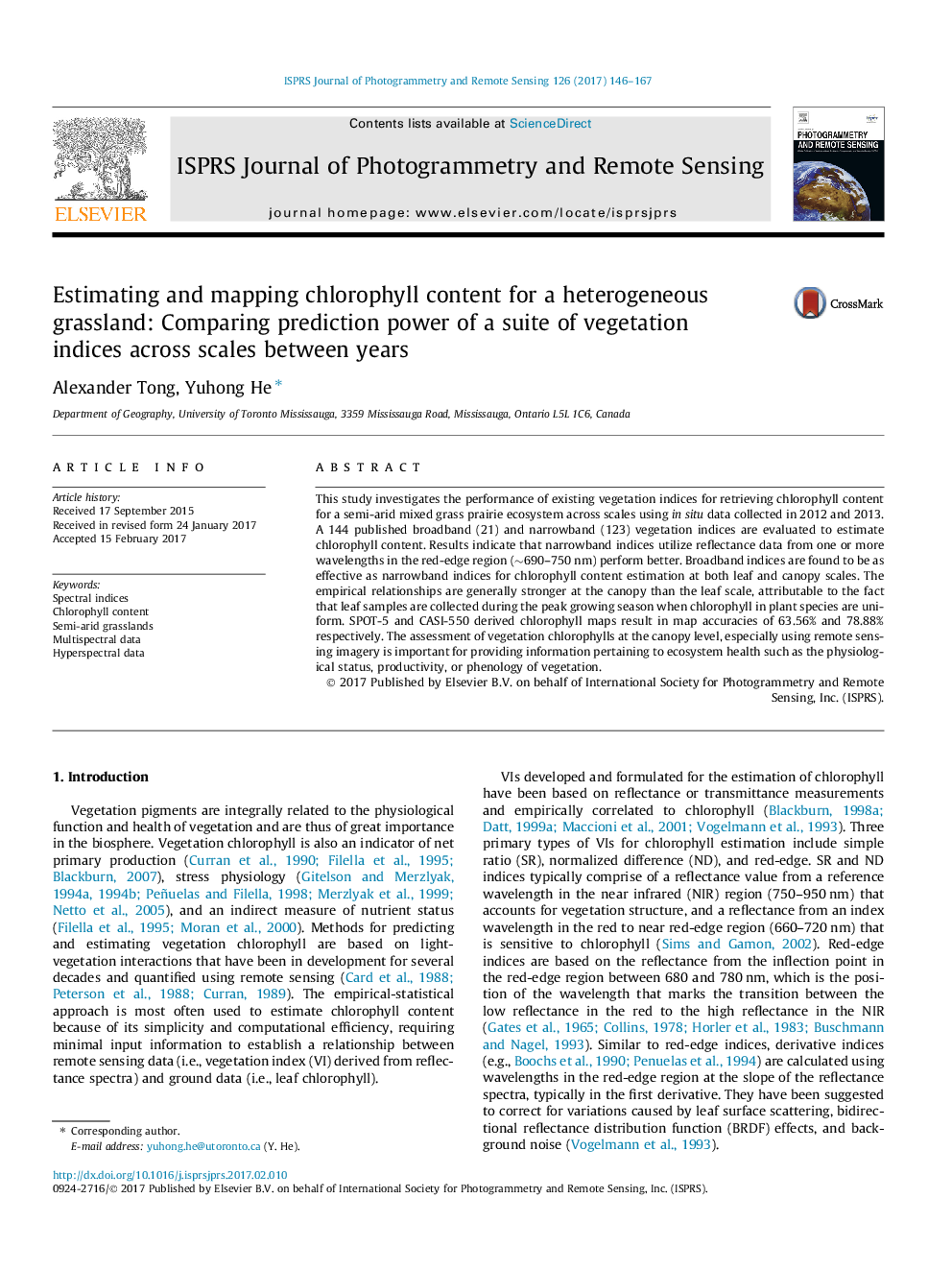| Article ID | Journal | Published Year | Pages | File Type |
|---|---|---|---|---|
| 4972948 | ISPRS Journal of Photogrammetry and Remote Sensing | 2017 | 22 Pages |
Abstract
This study investigates the performance of existing vegetation indices for retrieving chlorophyll content for a semi-arid mixed grass prairie ecosystem across scales using in situ data collected in 2012 and 2013. A 144 published broadband (21) and narrowband (123) vegetation indices are evaluated to estimate chlorophyll content. Results indicate that narrowband indices utilize reflectance data from one or more wavelengths in the red-edge region (â¼690-750Â nm) perform better. Broadband indices are found to be as effective as narrowband indices for chlorophyll content estimation at both leaf and canopy scales. The empirical relationships are generally stronger at the canopy than the leaf scale, attributable to the fact that leaf samples are collected during the peak growing season when chlorophyll in plant species are uniform. SPOT-5 and CASI-550 derived chlorophyll maps result in map accuracies of 63.56% and 78.88% respectively. The assessment of vegetation chlorophylls at the canopy level, especially using remote sensing imagery is important for providing information pertaining to ecosystem health such as the physiological status, productivity, or phenology of vegetation.
Keywords
Related Topics
Physical Sciences and Engineering
Computer Science
Information Systems
Authors
Alexander Tong, Yuhong He,
